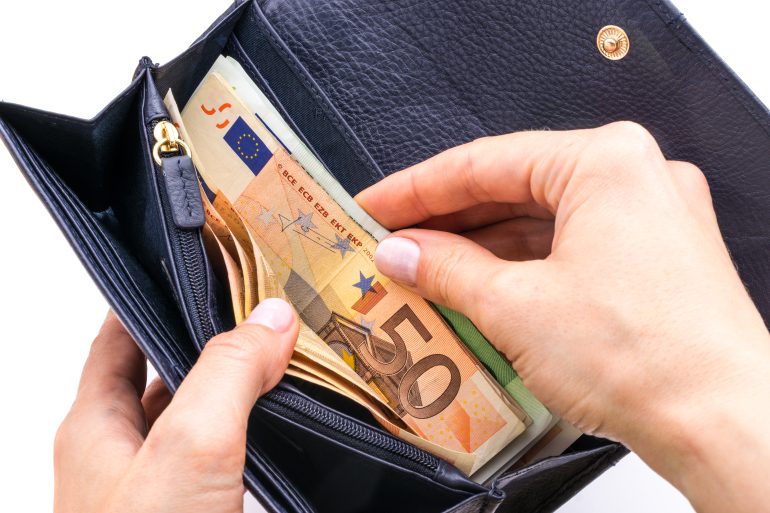According to De Nederlandsche Bank (DNB), the use of cash in the Netherlands is at an all-time low. This has to do with the overall convenience and security of electronic payments and an associated generational shift, as well as with fewer businesses accepting cash and fewer ATMs available on the streets. While it is known that there are certain population groups for which cash remains popular, the elderly being the most obvious, cash use is not often associated with younger Dutch demographics. However, a recent DNB study has shown that cash is also popular with young people, mostly teenagers who still live at their parents’ home, who surprisingly use it for a quarter of their total expenses.
Ten years ago, an average of 57% of purchases in the Netherlands were done in cash. This number has lowered year by year and by the end of 2022, it stood only at 15%. The Dutch use way less cash than their European counterparts, who use it for an average of 57% of their purchases. In the Netherlands, the populations who use less cash are families with a middle income (14%) and urban dwellers with a higher income (10%).
For Jelmer Reijerink, the DNB economist who authored the recent study, the fact that young Dutch people are much fonder of cash than previously thought is surprising and almost counterintuitive: ‘You would think that young people who use their phone a lot, would only pay with their phone,’ he said in a recent DNB news publication. But the reality is quite different. According to him, this may be because some parents give their children pocket money in cash, and also because for this young demographic, who still live at their parents’ home, it is not impractical to pay for their smaller expenses in cash as it would be for ‘the weekly groceries or the purchase of a refrigerator’. After all, Reijerink adds: ‘It’s easier to pay for a can of soft drink with cash.’
The fact that younger people’s cash habits resemble those of older generations, who use it in almost a third of their purchases, is surprising; but they are not the only ones doing it. According to the DNB study, city dwellers, often without children and with limited budgets, also use cash more often than the average people in the Netherlands. In their case, cash is easier to budget and harder to part ways with than in digital payments. In Reijerink’s words: ‘Cash is visible, you can hold it and that makes it easier to divide it into portions, for example. Someone who has a maximum of €100 to spend per week may find it useful to keep an overview in this way.’
In light of the DNB study results, AD newspaper asked its readers last February whether they still carried cash in their pockets and used it for purchases. The answers were varied: while several people predictably preferred electronic payments, citing that it is easier to keep track of the expenses with the statement record, on top of the overall smoothness and convenience, there were many participants who still liked to pay in cash, arguing that cash helped them spend less and have more control over their budgets. In any case, many who use electronic methods of payment still carry cash in their wallets in case of an emergency.
It remains to be seen whether cash use habits change in the near future, as the purchasing power in the Netherlands is expected to grow by 2.7% over the next year, due to increasing wages and lower inflation, according to an announcement made by the Central Planning Bureau last February. For the medium term, however, DNB has repeatedly warned about the importance of maintaining cash payments available for all those who may choose, or have no other choice but to use them. This is in line with European policies aiming to preserve cash as available, attractive, reliable and competitive over the next few years.
Written by Juan Álvarez Umbarila
